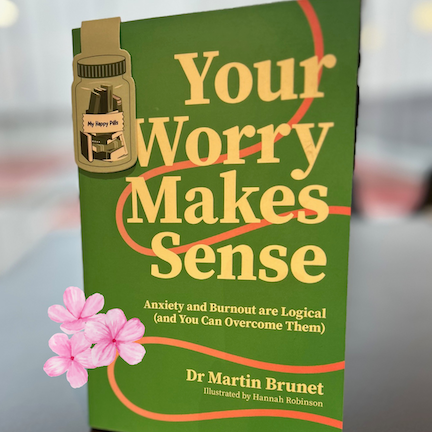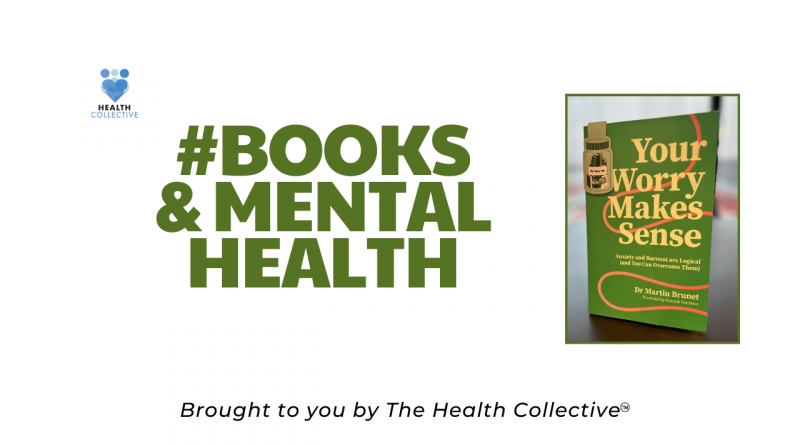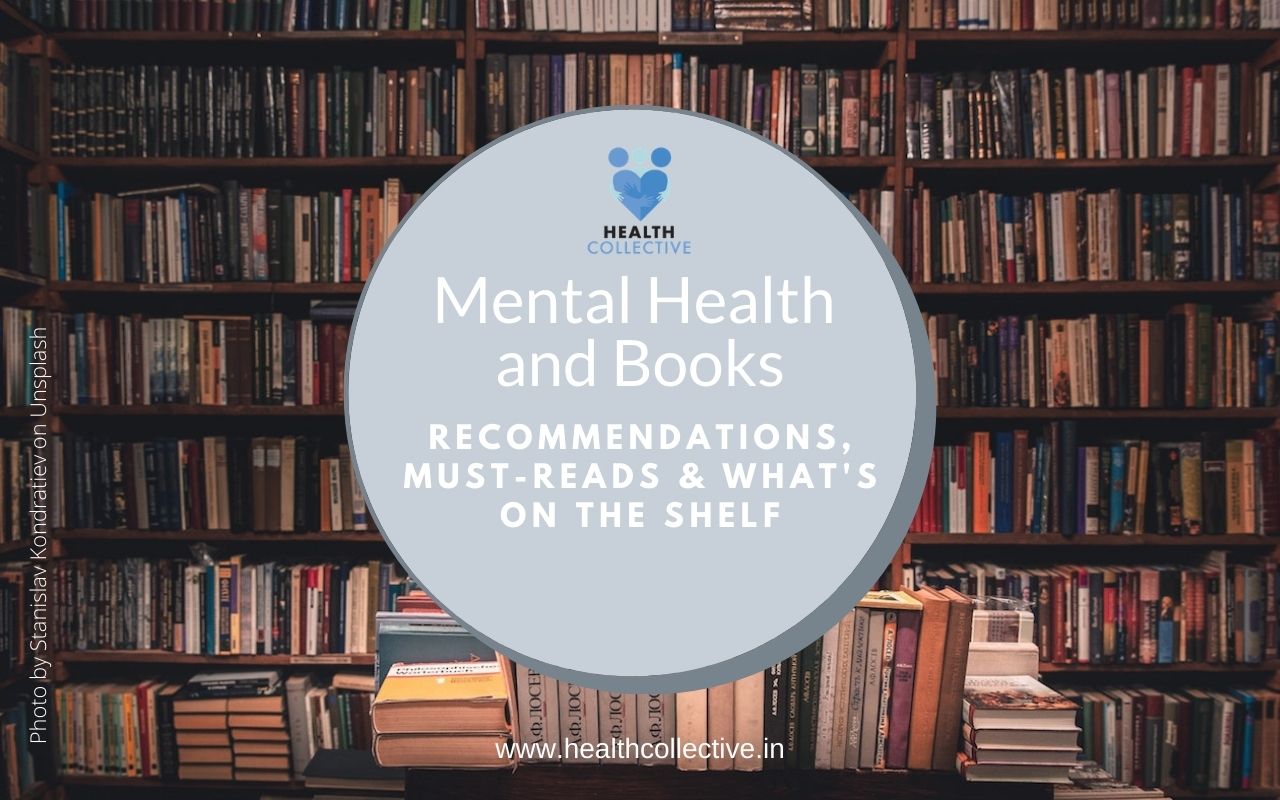Your Worry Makes Sense: Empathy in Book Form
By Asma G
My first introduction to Dr Martin Brunet’s work was through a reel he posted on burnout. The reel was quite popular, amassing 4 million views since 2023.
The UK-based NHS General Practitioner (GP) and GP trainer goes by the handle @doc_martin_gp on Instagram (and TikTok). His reels on Instagram regularly rack up tens of thousands of views, if not more. His reels cover topics like mindfulness, why strong people burnout (with 1.5 million views), obsessive-compulsive Disorder, imposter syndrome, to name a few. The reels are particularly helpful because he favours simple, non-medical terms over medical jargon and he uses props to explain ideas which makes the concepts more memorable.
So when I heard that Dr Brunet was writing a book about anxiety and burnout, I knew I had to get my hands on it. Your Worry Makes Sense: Anxiety and Burnout are Logical (and You Can Overcome Them) was published in March 2025.
Deep Dive into the Book
Your Worry Makes Sense is divided into four parts, with the first part focusing on anxiety, the second on burnout and burnout recovery, the third on dealing with anxiety, and the fourth focusing on sleep, breathing, CBT, and medication.
Dr Brunet uses a lot of examples from his own life, writing about fears he’s had, times in his life when he was approaching burnout, in addition to direct stories from his patients and composite anecdotes from several of his patients to illustrate his messages throughout the book.
Explaining the book’s title, Dr Brunet writes, “And that is why this book is called Your Worry Makes Sense, because the most important thing to learn about worry is that it is not foolish or ridiculous; it is actually highly logical and makes a lot of sense. We need to learn that it is not in the least bit foolish to feel these emotions, that they have a very sensible, rational and necessary purpose, and that telling someone not to worry is like telling them not to breathe, not to be alive, not to be human.”

Analogies to Simplify Concepts
Dr Brunet uses analogies to explain mental health concepts throughout the book, making it a lot easier to understand and remember why our minds and bodies behave the way they do. For example, he uses the analogy of a volume dial to explain the functioning of anxiety and that of a smoke alarm to explain panic attacks.
Describing panic attacks, Dr Brunet explains:
“Panic attacks, therefore, are like a smoke alarm. They are designed to wake us up when there is a major fire, and also to warn us whenever a fire might be about to happen. And so when panic attacks become a problem, we can imagine them being like a smoke alarm with a malfunction, a hair trigger that goes off with the faintest hint of fire or smoke, so much so that we can no longer even cook the dinner without it deafening us with its piercing call!”
Dr Brunet reframes anxiety from being perceived as foolish, silly, or ridiculous to what it truly is – an important protective mechanism that exists to protect us. He also describes a phobia he experienced as a child, cynophobia i.e. an extreme fear of dogs, and how he eventually dealt with it.
The book includes an excerpt from an article by Chris Hall, a columnist for The Guardian who describes his fear of cotton wool, writing, “My family refer to cotton wool as CW when I’m around. It’s their little way of acknowledging my odd phobia and that I don’t even like hearing the words cotton wool, let alone coming into contact with the stuff. My heart races, saliva rushes into my mouth, the hairs on my arms and neck stand up, I get goose bumps, my toes curl, my hands become fists.”
Reacting to this, Dr Brunet writes, “Cotton wool can’t be dangerous, surely? It must be irrational to be afraid of cotton wool! But that is the wrong way to approach what is happening here. The question we must ask ourselves is this: if cotton wool made you feel like that, would it not be entirely rational to be afraid of it?”
What an incredibly empathetic perspective about someone’s phobia!
Dr Brunet devotes an entire chapter to health anxiety to make up for the lack of attention paid to the subject by academia and the medical profession – he notes that GP computer systems in the UK don’t have a code assigned for health anxiety to document it in GP records, guidelines do not exist to treat it, and he has never been to a lecture about health anxiety despite it being a common issue patients present with.
Comprehensive View of Anxiety & Burnout
Your Worry Makes Sense provides a comprehensive view of anxiety and burnout and includes exercises and tools to help readers deal with anxiety, steps for dealing with burnout, and signs that burnout is reducing.
Despite the book’s serious themes, the book is not without humour. In one chapter, Dr Brunet explains the importance of using silliness in dealing with anxiety to change the scary associations we have with anxiety. Explaining the importance of objectifying your anxiety as a ‘fluffy, slightly comical, bark-worse-than-its-bite type of monster’, Dr Brunet describes Wilbur, an anxiety monster with inflatable horns, no teeth and dentures that fall out when it tries to roar, an intriguing idea and one that made me chuckle.
Empathy in Book Form
While I realise that it is strange to describe a book as empathetic, there is no better way to describe Your Worry Makes Sense. Reading Dr Brunet’s book and his non-judgmental, empathetic style of writing made me feel like I was speaking to a kind, non-judgmental friend who also happened to be a doctor. With chapter titles like Anxiety is never foolish or ridiculous; Avoidance makes sense; Dealing with the anxiety monster, the book is a breath of fresh air at a time when bookstores are filled with books with covers that scream Control/Overcome/Stop Anxiety or some permutation or combination of such words.
Your Worry Makes Sense is a book I would recommend to every adult. I can probably (unfortunately) count on one hand the number of people I know who aren’t dealing with burnout and in the aftermath of the pandemic, so many of us are anxious, even if we don’t have a diagnosable anxiety disorder. The fact that the book is a calming, soothing delight to read is just a bonus!
(CW) In case it’s helpful as a Content Warning: The book contains mentions of self-harm, eating disorders, and obsessive-compulsive disorder.
About the Author: Asma G is a feminist writer with an interest in public policy and mental health. You can read more of her pieces right here, and find her on Instagram at @asmag7
Views expressed are personal.




